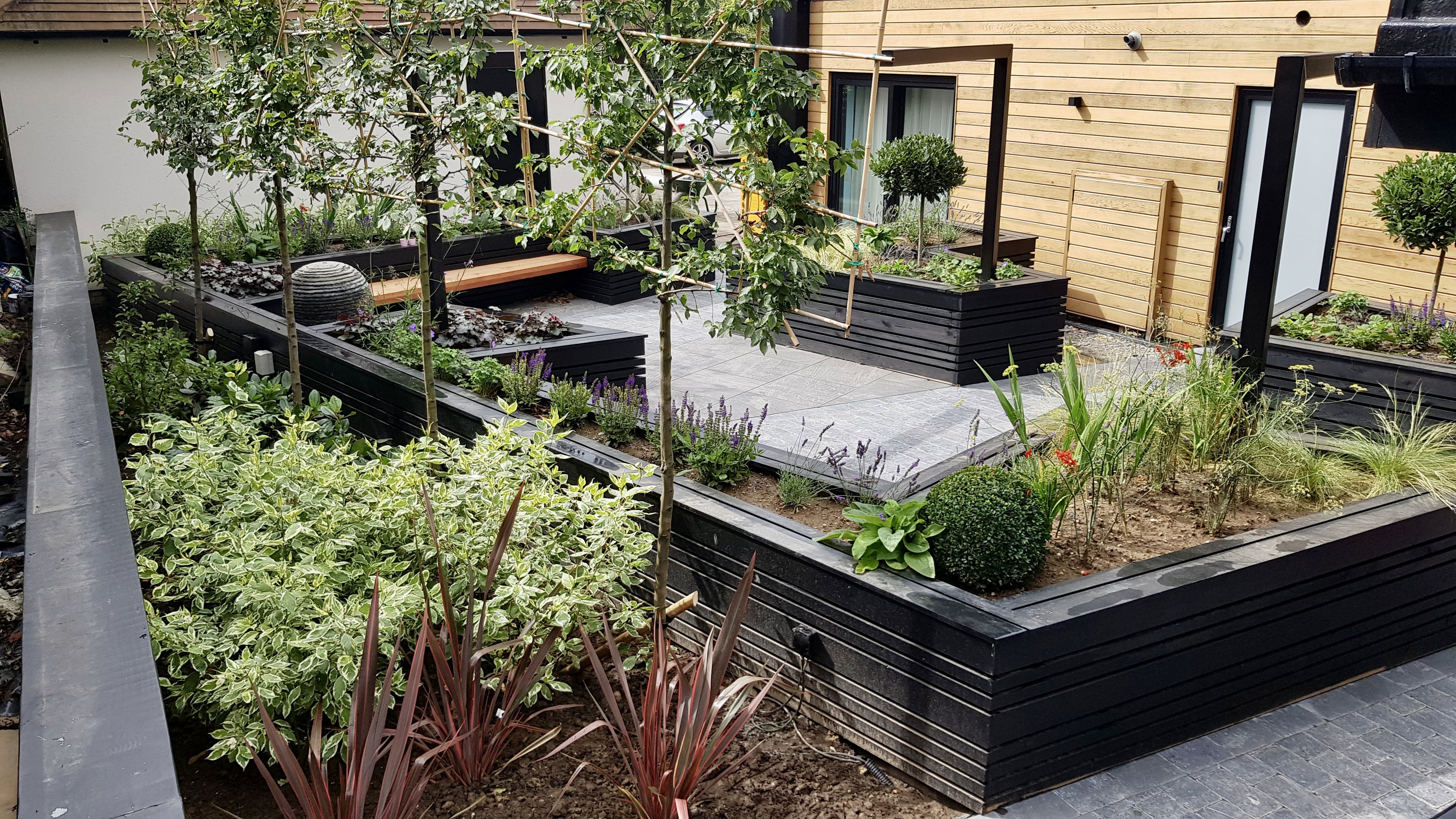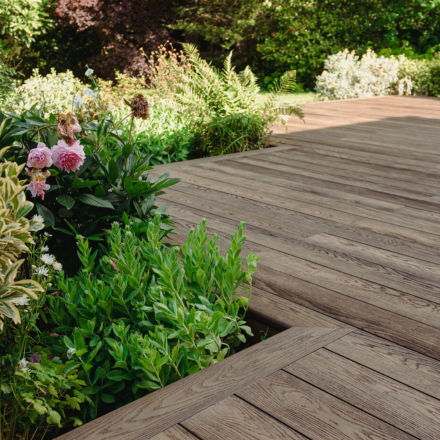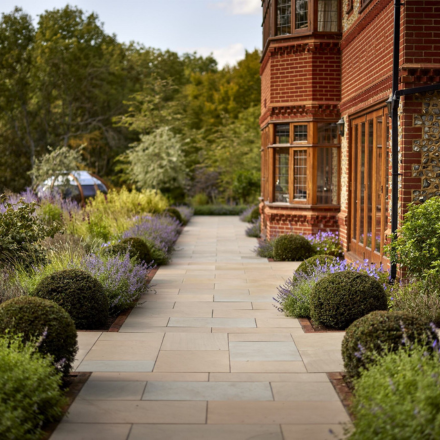
Designing and Building an Accessible Garden
Designing and building an accessible garden is an exciting opportunity to create a space that everyone can enjoy and benefit from. It’s about creating a layout and planting plan where everybody can enjoy the benefits of being outdoors; there are the practical considerations of providing features to help with independence, mobility, sensory engagement, lifelong learning and social interaction. Along the way, practical aspects like building regulations, ensuring safety, and maximizing value for money are integral parts of the process, helping to make the final garden both functional and inspiring.
What Needs to be Considered when Designing and Building an Accessible Garden?
-
CDM (2015) Regulations - complying with the law on health and safety during the design and build process. You can find out more about CDM here (link to CDM blog)
-
Building regulations: Essential for the protection of garden users and any property adjacent to the plot.
-
Incorporating Specialist equipment - lifts, hoists, play equipment, raised beds etc
-
Getting in and out of the garden. Access points, ease of use of gates etc
-
Heights and levels: making it as convenient as possible to reach every part of the garden and enjoy all of the benefits on offer
-
Hard Landscaping layout: Paths, slopes, ways to navigate the space and journey around the garden.
-
Types of surfaces - for safe and easy access
-
Planting plans: Choosing trees, shrubs and plants to stimulate the senses and encourage exploration and engagement
-
Weatherproofing - a pergola or shelter so that the garden can be enjoyed no matter what the weather is like
-
Garden maintenance: mowing, watering, deadheading, weeding, mulching etc
-
Futureproofing - making sure the garden can adapt to changing needs
-
Durability - ensuring the longevity of landscaped features
A beautifully designed, fully inclusive garden considers the needs of everybody who wants to use it. That includes family members, carers, visitors and even pets. Each and every person will have a different set of needs. Some may want a quiet place to relax, others may want a play space. Anyone should be able to get involved with as much or as little garden maintenance as they choose.

The Legal and Regulatory Stuff
Before we start waxing lyrical about aesthetics, let’s look at the legal obligations of anybody involved in designing and building an accessible garden. In truth, these obligations apply to any garden makeover and need to be thoroughly understood and discussed with your garden designer and landscaper.
The CDM (2015) Regulations are all about ensuring the safety and wellbeing of anybody who may need to access the garden during the build process. That includes, of course, the householder and their family, the landscapers and any suppliers bringing materials. It also includes the postie, visitors to the home, the Amazon delivery person, neighbours and surprisingly, passersby too.
Unless they appoint a Principal Designer and a Principal Contractor in writing, householders are legally responsible for the health and safety of everyone on site and could find themselves in a dreadful pickle if anything goes wrong.
There is a more detailed article about the CDM (2015) Regulations elsewhere on our website. We’ll post a link to it at the end of this article.
Building Regulations apply to any construction project, even to outdoor works such as landscaping. If you are designing and building an accessible garden, it’s crucial that you acquaint yourself with the regulations pertaining to slopes, steps, handrails, path widths and the like.
Visit the Planning Portal website to download and read the most up to date documents or contact your local council for advice.
What To Include in an Accessible Garden
Every single garden and every single garden user are completely different, which means there is no definitive list of what (and what not) to include in an accessible garden.
The most important thing to think about is how the garden will be used. Will it be for soaking up the sunshine? Eating al-fresco? Growing plants? Meeting with friends and family? Stimulating particular senses? Exercising?
Next, consider what features and equipment will be needed to allow your garden to function as you’d wish. Will it need to be wheelchair friendly? Should it be easily navigable by somebody with impaired vision? Do you need a shady place to sit? Shelter from the rain? What about specialised play equipment?
Here are a few suggestions.
-
A patio (or two) with easy access for dining, crafts, entertaining and relaxing
-
Sturdy paths for moving around the garden
-
Raised beds to make garden maintenance easier
-
A natural lawn to help cool the area in summer and to provide contrasting textures
-
Shelter from the sun, rain and wind to allow all year round use of the space
-
Lighting to extend the amount of time spent outdoors and for extra sensory stimulation
-
Water for wildlife interest and/or sound
-
A wide variety of plants offering colour, texture, scent and seasonal interest
-
Ramps and steps as needed for accessing all areas
-
Strategically placed resting places
-
Intimate spaces for reflection and contemplation

Planning the Layout of an Accessible Garden
Layout plans define how the garden can be navigated and used. Your garden designer will consider factors such as where the sun falls at different times of the day, where the garden is most (and least) overlooked, slopes, existing features, the type of activities to be accommodated and of course, the space available.
You may want to design the layout of your garden yourself. However, please do consider hiring a garden designer. They are experts at coming up with unique and imaginative solutions to the challenges posed by all types of accessibility issues. Plus of course, a good garden designer will be au fait with any and all regulations that apply to accessible gardens.
For example, in a wheelchair accessible garden, the designer will take special care to ensure that paths are wide enough to accommodate wheelchairs or walkers, that turning circles are considered, that steps and slopes easily negotiated and that gates don’t slope directly onto a ramp (it’s not easy to control a wheelchair AND open a gate at the same time).
The visually impaired may appreciate features within a garden layout to make navigation easier. Hand rails, static art, different sounds and a variety of textures underfoot are all helpful aids. Garden designers have a way of accentuating some features in order to make full use of non-visual senses.
A note about level access. Level access to buildings is helpful to people with impaired mobility. They can move easily from indoors to outdoors without struggling with steps. However, designing level access is a complex process because the landscaping features must not compromise the property’s damp proofing mechanisms. But at the same time, the damp proof course must not be compromised. If you are at all unsure about a level access feature in a garden design, please seek advice from Building Control before embarking on a build as rectifying mistakes can be very costly indeed.
Specifying Surfaces for an Accessible Garden
Choosing appropriate surfaces is a crucial part of any garden design, but for an accessible garden, the process requires a little extra consideration.
How will the surface be used? A deep layer of loose gravel is entirely unsuitable for wheelchairs and wheeled walkers. However, the addition of gravel stabilisation grids may make the surface easier to use. Some types of paver can be slippery when wet. Riven stone is a good choice for an accessible garden. It has a slight texture to it which makes it less inclined to be slippery. It pays to consult the technical spec of any material before incorporating it into a garden design.
Gradient is important too. All paving needs to be laid on a slight slope for drainage but of course an easy access ramp requires a steeper angle. How steep should that angle be? Certainly no more than 1:12 for independent use. And if the ramp covers a long distance, flat resting places should be included in the design.
Considering Ongoing Maintenance
All gardens need a modicum of maintenance. From weeding, watering and mowing to sweeping up fallen leaves to reduce slip hazards. This needs to be considered at the design stage. Perhaps the client has difficulty bending down? In which case planting areas could be raised to a more accessible height. Something as simple as installing water butts or standpipes around the garden can make watering easier. And of course these days, a level lawn can happily be tended to by a robotic mower.
Don’t dismiss any garden feature on the grounds of accessibility until you have investigated all of the options. More often than not there will be a common sense solution for every perceived problem. Including employing an APL Professional Gardener to tend to the ‘big jobs’.
Durability of Gardens
When you have invested in an accessible garden, more than anything you want it to be safe. No dodgy decking, crumbling steps or wonky hand rails. The best way to ensure that your garden remains usable for decades to come is to hire reputable professionals to design, install and maintain it.
When you hire an APL member to work on your garden transformation, you can be confident that they will listen to your needs, do plenty of research, and build your outdoor space to the highest possible specification. That way you will have peace of mind along with the full benefit of being able to enjoy your garden and engage with nature.

Interested in finding out more?
CDM (2015) Regulations - your legal responsibilities.
